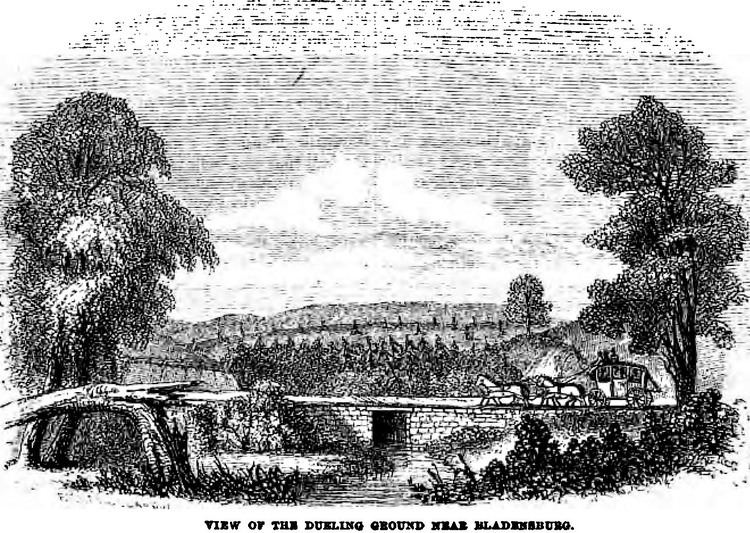Created October 15, 1966 | ||
 | ||
Type County park and state historic site Location Dueling Creek Natural Area, Colmar Manor Community Park, Colmar Manor, Maryland, United States (formerly, the Bladensburg Dueling Grounds, in Bladensburg, Maryland) Owned by Prince George's County Department of Parks and Recreation | ||
Bladensburg Dueling Grounds is a small spit of land, a fraction of its original size, along Dueling Creek, formerly in the town of Bladensburg, Maryland, and now within the town of Colmar Manor, just to the northeast of Washington, D.C., United States. Dueling Creek, formerly known as '"Blood Run" and the "The Dark and Bloody Grounds", is a tributary of the Anacostia River, which was formerly, called the East Branch Potomac River.
From 1808 the grove witnessed approximately fifty duels by gentlemen, military officers, and politicians, settling "affairs of honor". The exact number of duels and the names of all the participants who fought at Bladensburg may never be known because dueling was against the law, surviving records are obscure, and the events are not well documented. It is quite possible that more than fifty duels took place there. A formalized set of rules dealing with dueling etiquette referred to as a Code duello was usually enforced by the duelers and their seconds, even though dueling was illegal in the District of Columbia, and in most American states and territories.
Following the Civil War, dueling fell out of favor as a means of settling personal grievances and declined rapidly; the last known duel was fought here in 1868.
